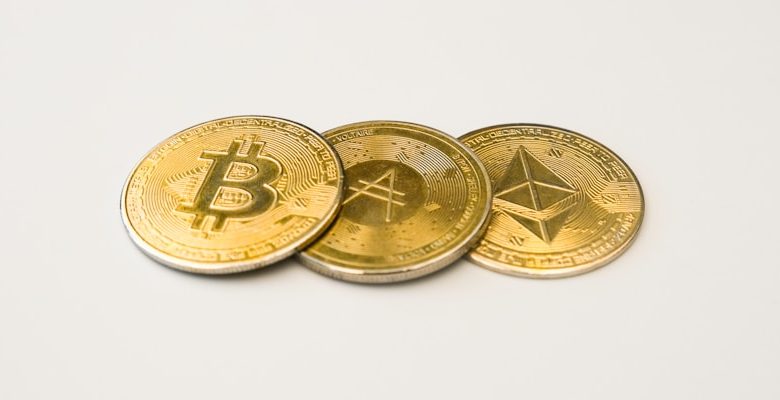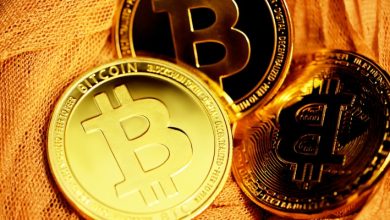What Are NFT Tokens? A Guide to the Latest Trend

- Understanding NFT Tokens and Their Popularity
- How NFT Tokens Are Revolutionizing Digital Ownership
- Exploring the Concept of Non-Fungible Tokens
- The Rise of NFT Tokens in the Digital Art World
- Key Features and Benefits of NFT Tokens
- Tips for Buying and Selling NFT Tokens
Understanding NFT Tokens and Their Popularity
NFT tokens have been gaining popularity in recent times due to their unique characteristics and the opportunities they offer to creators and collectors alike. NFT stands for non-fungible tokens, which means that each token is unique and cannot be exchanged for another token of the same value. This uniqueness is what sets NFTs apart from other forms of digital assets, making them highly sought after in the digital art and collectibles market.
One of the key reasons for the popularity of NFT tokens is their ability to provide proof of ownership and authenticity for digital assets. This is especially valuable in the art world, where provenance and authenticity are crucial for determining the value of a piece. With NFT tokens, creators can easily verify the ownership of their digital creations and collectors can prove the authenticity of the items in their collection.
Additionally, NFT tokens have opened up new avenues for creators to monetize their work. By tokenizing their art or creations, artists can sell them directly to collectors without the need for intermediaries like galleries or auction houses. This direct-to-consumer model not only allows creators to retain more control over their work but also enables them to reach a global audience of collectors who are interested in owning unique digital assets.
Furthermore, the decentralized nature of blockchain technology, on which NFT tokens are built, ensures that transactions are secure and transparent. Each transaction is recorded on the blockchain, providing an immutable record of ownership that cannot be altered or tampered with. This level of security and transparency has instilled trust in the NFT market, attracting more creators and collectors to participate in this burgeoning space.
Overall, the rise of NFT tokens can be attributed to their unique properties, which offer a new way for creators to monetize their work, collectors to own unique digital assets, and the art market to evolve in the digital age. As more people become aware of the potential of NFT tokens, their popularity is only expected to grow in the coming years.
How NFT Tokens Are Revolutionizing Digital Ownership
NFT tokens have been making waves in the digital world, revolutionizing the concept of ownership. Unlike traditional cryptocurrencies like Bitcoin, NFTs represent ownership of a unique digital asset, whether it’s a piece of art, music, or even a tweet. This uniqueness is what sets NFTs apart, as each token is one-of-a-kind and cannot be replicated or exchanged for another token.
The blockchain technology behind NFTs ensures that ownership is secure and transparent. Each token is stored on a decentralized ledger, providing a permanent record of ownership that cannot be altered or tampered with. This level of security has made NFTs appealing to collectors and creators alike, as it gives them a way to authenticate and monetize their digital creations.
One of the key benefits of NFT tokens is that they allow for fractional ownership, meaning that multiple investors can own a share of a single asset. This opens up new opportunities for creators to raise funds and for investors to diversify their portfolios. Additionally, the ease of transferability of NFT tokens allows for seamless buying, selling, and trading of digital assets without the need for intermediaries.
Overall, NFT tokens are changing the way we think about digital ownership, creating new possibilities for creators, investors, and collectors. With their unique properties and secure blockchain technology, NFTs are here to stay and are poised to continue revolutionizing the digital landscape for years to come.
Exploring the Concept of Non-Fungible Tokens
Exploring the concept of non-fungible tokens (NFTs) can open up a whole new world of possibilities for digital assets. Unlike traditional cryptocurrencies like Bitcoin or Ethereum, NFTs are unique tokens that represent ownership or proof of authenticity of a specific digital item. These items can range from digital art, collectibles, virtual real estate, in-game items, and more.
One of the key features of NFTs is their indivisibility and uniqueness, which means that each token is distinct and cannot be exchanged on a one-to-one basis like traditional cryptocurrencies. This uniqueness is achieved through the use of blockchain technology, which ensures the scarcity and provenance of each NFT. As a result, NFTs have gained popularity in the digital art world, allowing artists to sell their work directly to collectors without the need for intermediaries.
Furthermore, the concept of NFTs has created a new way for creators to monetize their digital content, as each token can be bought, sold, and traded on various online marketplaces. This has led to a surge in interest from both artists and collectors looking to participate in this emerging trend. However, it is essential for anyone looking to get involved in the world of NFTs to understand the potential risks and challenges associated with this technology, including issues of copyright infringement, token standards, and market volatility.
The Rise of NFT Tokens in the Digital Art World
The rise of non-fungible token (NFT) tokens in the digital art world has been nothing short of revolutionary. NFTs have completely transformed the way we buy and sell digital art, offering artists a new way to monetize their work and collectors a new way to own and trade digital assets.
NFT tokens are unique digital assets that are stored on the blockchain, making them one-of-a-kind and impossible to duplicate or counterfeit. This scarcity is what gives NFT tokens their value, as collectors are willing to pay top dollar for the bragging rights of owning a rare piece of digital art.
One of the key benefits of NFT tokens is that they provide artists with a new revenue stream. By tokenizing their work, artists can sell limited editions of their art directly to collectors, cutting out the middleman and keeping more of the profits for themselves. This has democratized the art world, allowing artists of all levels to showcase and sell their work to a global audience.
Collectors, on the other hand, are drawn to NFT tokens because of their authenticity and scarcity. Owning an NFT token gives collectors the assurance that they are the sole owner of a digital artwork, with proof of ownership stored securely on the blockchain. This has created a new market for digital art, with collectors eager to snap up the latest NFT tokens before they become too valuable to afford.
Overall, the rise of NFT tokens in the digital art world has opened up exciting new possibilities for artists and collectors alike. As the technology continues to evolve and new platforms emerge, we can expect to see even more innovation in the way we buy, sell, and own digital art.
Key Features and Benefits of NFT Tokens
NFT tokens have several key features and benefits that make them stand out in the world of digital assets. These unique characteristics contribute to the growing popularity of NFT tokens among collectors, artists, and investors alike.
One of the main benefits of NFT tokens is their **indivisibility**, which means that each token is unique and cannot be divided into smaller units. This feature adds to the rarity and exclusivity of NFT tokens, making them highly desirable for collectors looking to own one-of-a-kind digital assets.
Another important feature of NFT tokens is their **immutability**. Once a token is created and recorded on a blockchain, its ownership and provenance are securely stored and cannot be altered or tampered with. This transparency and security make NFT tokens a trusted and reliable form of digital ownership.
Additionally, NFT tokens offer **interoperability** across different platforms and marketplaces. This means that NFT tokens can be bought, sold, and traded on various blockchain networks, allowing for greater liquidity and accessibility for buyers and sellers.
Furthermore, NFT tokens provide **royalty** mechanisms that enable creators to earn a percentage of the resale value each time their token is sold. This feature ensures that artists and content creators can continue to benefit from the success of their work in the secondary market.
Overall, the key features and benefits of NFT tokens make them a valuable and innovative form of digital asset that continues to revolutionize the way we buy, sell, and collect art, music, and other digital content.
Tips for Buying and Selling NFT Tokens
When it comes to buying and selling NFT tokens, there are a few tips to keep in mind to ensure a smooth and successful transaction. First and foremost, it’s important to do your research and understand the current market trends. This will help you determine the value of the NFT you’re interested in buying or selling. Additionally, make sure to only buy or sell NFTs on reputable platforms to avoid scams or counterfeit tokens.
Another tip is to consider the rarity and uniqueness of the NFT you’re interested in. NFT tokens that are one-of-a-kind or part of a limited collection tend to have higher value in the market. It’s also a good idea to set a budget for yourself and stick to it when buying or selling NFT tokens. This will help you avoid overspending or selling for less than what the NFT is worth.
Lastly, consider the long-term potential of the NFT you’re buying or selling. Some NFT tokens may increase in value over time, while others may not hold their value as well. By taking these factors into consideration, you can make informed decisions when it comes to buying and selling NFT tokens.



